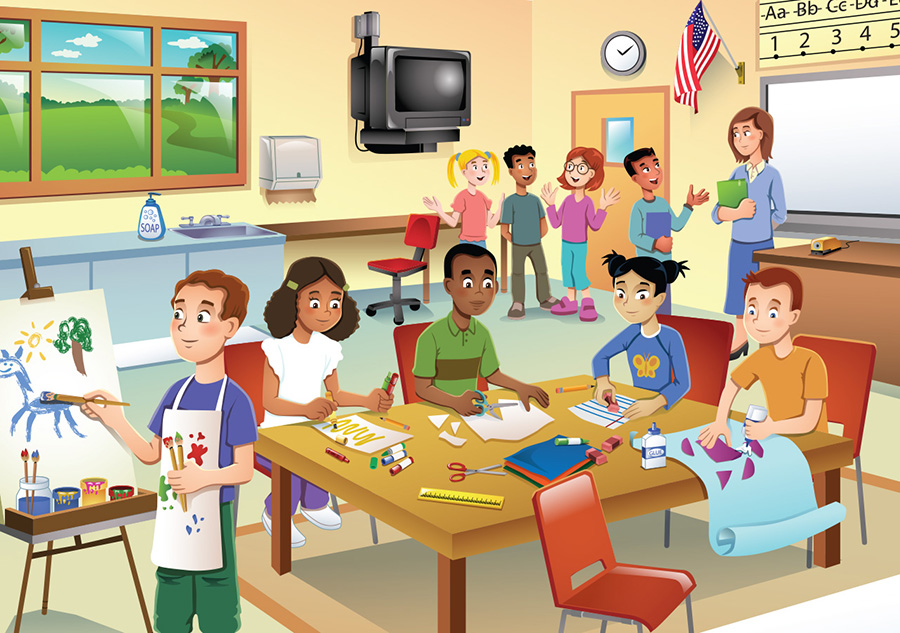Animation brings characters to life, entertains, educates and serves a host of other purposes. It is often used in education to explain difficult concepts in a visual way like how a bouncing ball works.
Whether you are looking to create cartoons or Disney world characters, there are a few fundamentals that every animator needs to understand. Here are some of them.
History
Animation is a form of filmmaking that uses drawings and pictures to create the illusion of movement. It can be seen on television, movies, and the internet. People often use it to make children laugh or tell a story. There are many different types of animation, including cartoons, stop motion, and 3D.
Animation has been around for a long time. For example, a pottery bowl from 3,000 BC shows a series of images depicting jumping goats. Leonardo Da Vinci’s Vitruvian Man drawing also hints at movement through changes in the angle of extension of the limbs.
But it wasn’t until 1906 that the first animated sequence was captured on film, with J. Stuart Blackton’s Humorous Phases of Funny Faces. Then, in 1876, William George Horner invented the zoetrope, which used a set of images to create the illusion of movement.
Techniques
Animators use different techniques to create their work. For example, easing is a technique that allows animators to make their characters and objects move in more natural ways. It involves adding small arcs of movement to movements so that they don’t look mechanical or forced.
Another animation technique is anticipation. This focuses on actions that take place before the main action, like a character clenching their fist or sighing. It’s an important part of making your animation look lifelike and helps to create more engaging content for audiences.
Mechanical animation is a technique that combines digital graphics with real-world footage to communicate complicated ideas. For instance, it can be used to illustrate statistical data or survey results in a visually stimulating way. It can also help explain how a product works.
Symbolism
A symbol is a concrete image that stands for an abstract idea. In literature, the best symbols evoke both an intellectual and an emotional response from readers. They can be as simple as an intuitive association, like water with rebirth or blood with guilt — but they can also be more nuanced.
A good writer employs symbols intentionally, rather than merely using them because they are common. Avoid using universal symbols, as these tend to be cliche and less impactful. Instead, opt for accidental ones, such as a character’s obsession with catching snakehead fish, or choose more intentional imagery, such as a garden growing weeds. The way in which a symbol is used and what it means to your characters will greatly affect its impact on your readership.
Styles
Choosing the right animation style is critical to ensuring that your visual story delivers on its intended message and keeps audiences engaged. This is especially important for businesses that are using animation to promote their products or services online. Considering factors like budget constraints and artistic preferences is also necessary when making this choice.
Anime is a unique style of animation that features dark colors and elements reminiscent of manga comics. It has become a staple of popular culture around the world and is an ideal option for brands looking to create creative storytelling for their audiences.
Screencast animation is a simple but effective style that uses screen captures to create tutorial or explainer videos. This type of animation is particularly useful for digital product and software companies that want to demonstrate how their products work to prospective customers.
Audience
Animated video can capture the attention of a target audience. It can also be used to highlight specific aspects of a product or service. Animated videos are ideal for explaining complex subjects, such as formulas or systems that are difficult to describe using voice alone.
As well as being a hugely entertaining medium, animation can fuel children’s imaginations and encourage creativity in the classroom. It is not surprising then that the art form has become a favourite for educators. Interestingly, research has shown that students respond more positively to animated videos than non-animated ones. This may be because they are less intimidating and help students focus on the content. Alternatively, it could be that certain gestures or cues are more easily understood across cultures and demographics.
